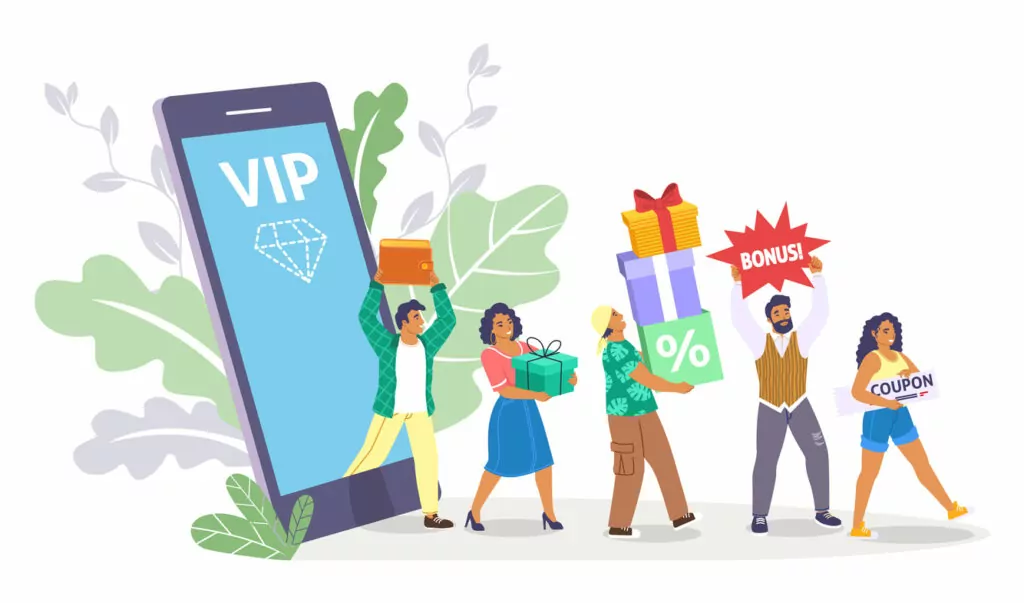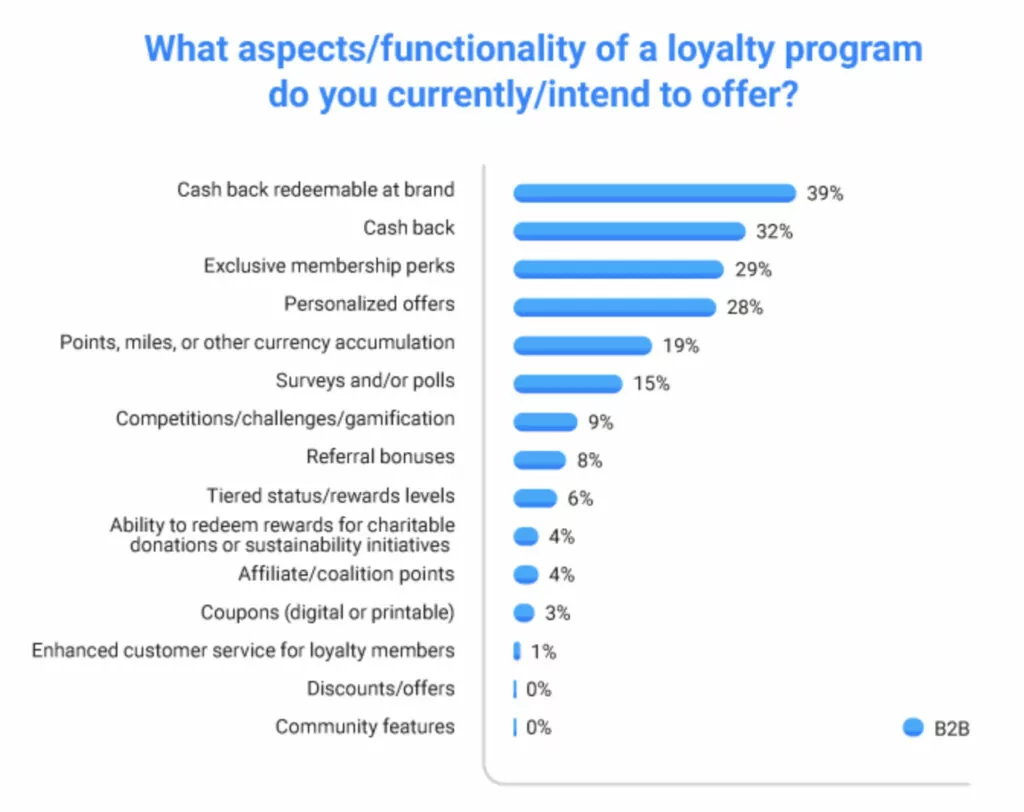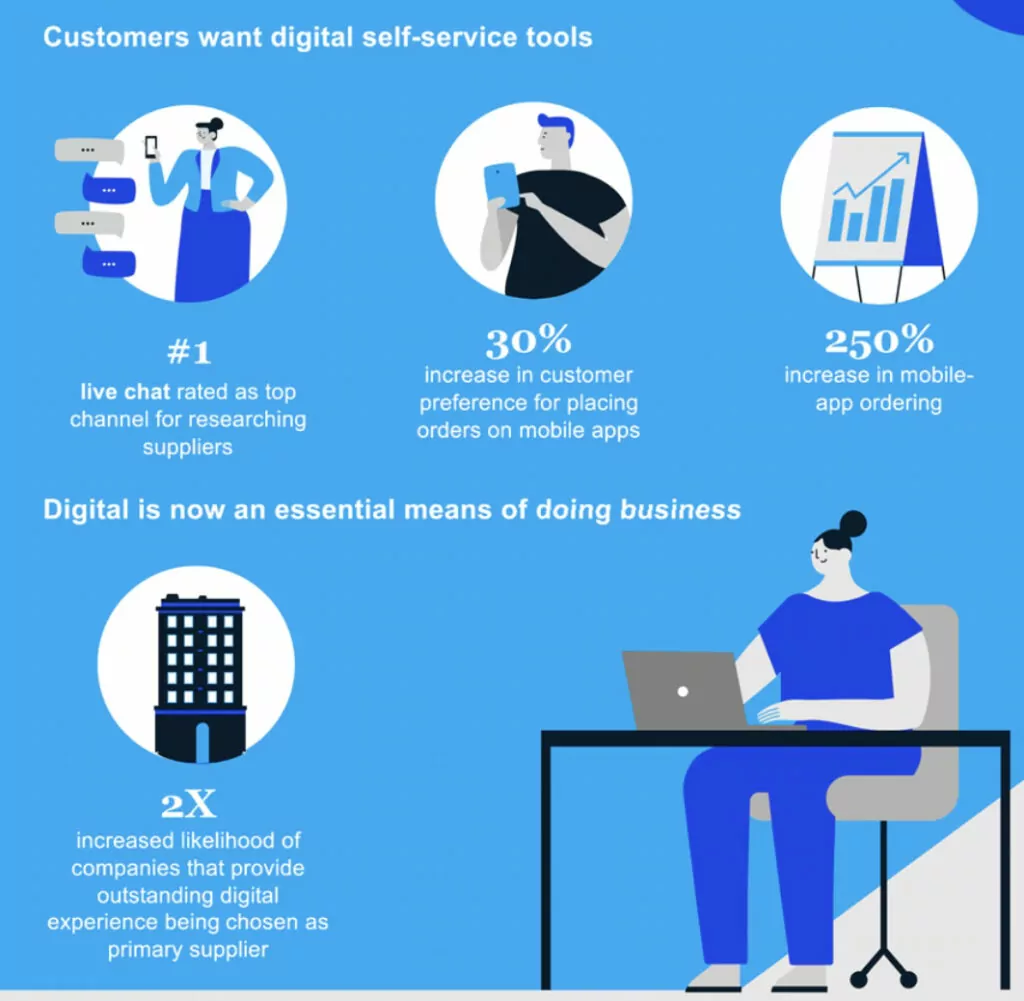Loyal customers are your most valuable B2B buyers. Roughly 65% of business comes from loyal customers. In addition, 43% of buyers will spend more at companies they are loyal to. A loyalty program for B2B customers encourages your customers to stay with your brand and spend more on your products and services.
Learn the benefits of a program and how to build a B2B customer loyalty program for your company.
Key Takeaways:
- A B2B customer loyalty program increases engagement, gathers data, improves upselling opportunities, and saves money
- Customer data builds the foundation for your loyalty program and allows you to personalize your offers
- Use loyalty programs based on longer buyer cycles and high-value products rather than multiple short-term transactions
Benefits of a Loyalty Program for B2B Customers
There are four primary benefits to having a loyalty program for your B2B customers.
Increases Customer Engagement
Customer engagement is how you build a relationship with your customers. It’s a shift in your interactions from treating your customers as a transaction to treating them like people by getting to know their needs, connecting with decision-makers, and building trust.
Loyalty programs offer new opportunities to engage with customers through special offers, promotions, and customized connections.
Gathers Important Customer Data
Customer loyalty programs are another way to track your buyers and their online activity. The customer data you gather improves your strategies by allowing you to personalize your approaches and communications to each decision-maker’s needs.
You can collect data when your customers fill out a loyalty program profile and perform their browsing and purchasing through their account, such as:
- Personal information: Their name, business contact information, and payment information
- Behavior: How they use your products, what they order, what they added to their cart
- Engagement: Past communications through email, chat, and social media
- Attitudes: Feedback, survey responses, customer complaints, and reviews
Improves Upselling and Cross-selling Opportunities
Your opportunities for upselling and cross-selling improve when you use loyalty programs. About 65% of B2B businesses say they can upsell to loyal customers. This is because you already have a foundation of trust in that business. Therefore, the sales process is much shorter and easier as it builds on an existing relationship.
Upselling and cross-selling aren’t the process of sending dozens of new offers, as that is the fastest way you can unravel your hard work in building a relationship. Instead, it’s a careful strategy of sending timely offers and opportunities based on known challenges and needs specific to each decision-maker and business.
Saves Money
Acquiring new customers costs five times as much as retaining loyal customers. B2B acquisition costs like lead generation, nurturing, and conversion can quickly add up. In addition, it takes weeks to months to complete as B2B sales journeys are longer than B2C.
However, loyal customers spend more and require fewer investments than bringing in new customers, which makes them among your most valuable customers.
5 B2B Loyalty Program Best Practices
Use these five tips to build a B2B loyalty program business model customized to your needs.
1. Use a High-Value Loyalty Program Structure
B2B loyalty programs differ from B2C programs because the products and services are high-value, and the sales cycle is longer. Therefore, traditional points and redemption models don’t always work as they are designed around low-value and frequent purchases.
Some examples of B2B program structures that work well include:
- Redeemable cash back
- Membership perks
- Membership tiers
In addition, businesses focus on long-term benefits rather than short-term emotional decisions. Therefore, loyalty programs centered around holidays and special sales aren’t as successful as those focused on solving pain points and growing businesses.
Source: COMARCH
2. Customize Offers According to Customer Data
Use your customer data on the buyer’s actions to customize your loyalty offers. For example, you can personalize each promotion and discount offers instead of sending general marketing emails. Your customized offers will focus on what you know they need.
For example, if they purchased a new service, you might offer a special promotion for an add-on service that complements their previous purchase.
In addition, knowing your customer’s behavior prevents you from sending irrelevant benefits.
For instance, if they already purchased a service for full price, they would not appreciate seeing a special promotion for that same service for new sign-ups. Instead, they would rather see new offers for products they don’t have yet.
3. Keep the Program Straightforward
Straightforward loyalty programs perform the best because customers know what to expect, and sales agents can easily explain them to customers.
When programs rely on various factors, including the type of product, the month of purchase, and frequency, the sales agents will have more of a challenge explaining the benefits to new customers. You also risk increasing the dissatisfaction of customers because they don’t fully understand how the benefits work, which limits how many perks they can earn.
Sticking to a straightforward system, such as a tier-based loyalty program with clearly outlined benefits, improves the customer’s understanding of the program and level of satisfaction.
4. Offer Digital Tools
After COVID-19, B2B customers shifted more towards digital interactions. For example, B2B buyers are increasing their use of live chat and mobile orders.
Mobile apps make tracking and using reward programs easier, as account-holders can perform all their purchases and interactions in one convenient location. It also improves your tracking ability as you can record more consumer behaviors from their mobile device and app.
Source: McKinsey
5. Connect with a Support Team
About 66% of buyers say that a fast response time is the most important part of excellent customer service. To improve the customer support for your loyalty program, make sure you have a quick lead distribution strategy in place to ensure each contact connects with an available agent.
Customer service automation sends responses automatically and moves contacts quickly to the correct department. Then it alerts available agents so they can receive fast responses and answers promptly to improve their customer experience.
Gather Data You Need for a Loyalty Program for B2B Customers
You can improve customer engagement and lead distribution using MXTR’s marketing automation software. We ensure you don’t lose customers along the way by tracking and distributing them to the most relevant agent. In addition, our software collects the data you need to build a personalized customer loyalty program with offers your buyers want to see.
Schedule a demo to see how our marketing automation platform will improve your customer loyalty program.
Featured Image: istockphoto









